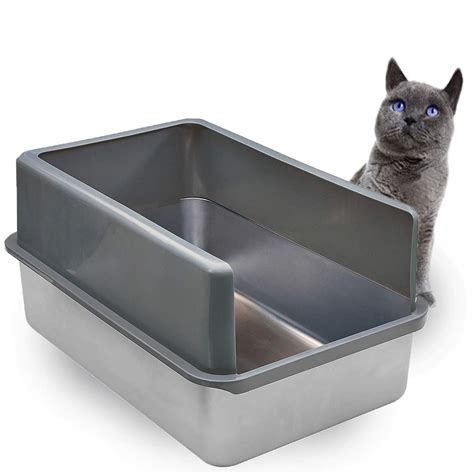Introduction
Cats are obligate carnivores, which means their bodies are designed to digest and utilize nutrients from animal-based foods. However, even the healthiest cats can experience digestive issues, and one common cause is an imbalance in their diet.

The litter box is a valuable tool for monitoring your cat’s health. By observing the frequency, consistency, and color of your cat’s stools, you can identify potential problems and seek veterinary care if necessary.
Litter Box Habits and Nutrition
Frequency:
- Normal: 1-3 bowel movements per day
- Excessive: More than 3 bowel movements per day
- Infrequent: Less than 1 bowel movement per day
Consistency:
- Normal: Firm and well-formed
- Hard: Dry and difficult to pass
- Loose: Soft and watery
- Diarrhea: Liquid and uncontrollable
Color:
- Normal: Brown or chocolate brown
- Black: May indicate bleeding in the digestive tract
- Yellow: May indicate liver or gallbladder problems
- Green: May indicate intestinal inflammation
Diet and Litter Box Problems
Hard Stools:
- Causes: Dehydration, lack of fiber, excessive protein intake
- Solutions: Increase water intake, add fiber to the diet, reduce protein intake
Loose Stools:
- Causes: Food sensitivities, parasites, infectious diseases
- Solutions: Identify and eliminate food allergens, treat parasites, seek veterinary care for infections
Diarrhea:
- Causes: Bacterial infections, viral infections, parasites, dietary indiscretion
- Solutions: Withhold food for 12-24 hours, offer small amounts of water, seek veterinary care if symptoms persist
Nutrition for Healthy Litter Box Habits
Protein:
- Amount: 26-30% of daily calories
- Source: Animal-based proteins (e.g., chicken, fish, beef)
Carbohydrates:
- Amount: Limited (less than 10% of daily calories)
- Source: Whole grains, fruits, vegetables (e.g., brown rice, carrots, apples)
Fiber:
- Amount: 2-5% of daily calories
- Source: Whole grains, fruits, vegetables (e.g., oats, pumpkin, celery)
Fat:
- Amount: 10-15% of daily calories
- Source: Animal-based fats (e.g., chicken fat, salmon oil)
Water:
- Amount: Approximately 1 ounce per pound of body weight per day
- Source: Fresh water bowl, wet food
Comparing Cat Litter Box Habits and Nutrition
| Litter Box Habit | Possible Nutritional Causes |
|---|---|
| Hard Stools | Dehydration, lack of fiber, excessive protein intake |
| Loose Stools | Food sensitivities, parasites, infectious diseases |
| Diarrhea | Bacterial infections, viral infections, parasites, dietary indiscretion |
| Increased Frequency | Parasites, anxiety, thyroid issues |
| Infrequent Frequency | Constipation, dehydration, urinary tract infections |
Current Status and Future Directions
Despite advances in veterinary medicine, digestive issues remain a common problem for cats. However, with a better understanding of the relationship between litter box habits and nutrition, we can develop more effective strategies for prevention and treatment.
Innovative Solutions:
- Smart litter boxes: Use sensors to monitor litter box usage and alert owners to potential health issues.
- Personalized nutrition: DNA testing identifies individual dietary needs based on breed, age, and health status.
- Probiotics: Beneficial bacteria that support digestive health and immune function.
FAQs
1. How often should I clean my cat’s litter box?
– Daily is ideal.
2. What type of litter is best for my cat?
– Choose a litter that is unscented, non-clumping, and has a fine texture.
3. How do I know if my cat is dehydrated?
– Check the gum color. Healthy gums are pink and moist. Dehydrated gums are pale or sticky.
4. What should I feed my cat after diarrhea?
– Start with a bland diet of cooked chicken and rice. Gradually transition to a regular diet over 2-3 days.
5. Should I worm my cat regularly?
– Yes, regular deworming is recommended to prevent parasitic infections that can cause digestive issues.
6. What are common symptoms of food sensitivities?
– Vomiting, diarrhea, skin rashes, itching
7. Can I use fiber as a laxative for my cat?
– Yes, but consult with your veterinarian for the appropriate type and dosage of fiber.
8. What should I do if my cat has persistent diarrhea?
– Seek veterinary care immediately. Persistent diarrhea can be a sign of serious underlying health conditions.





















